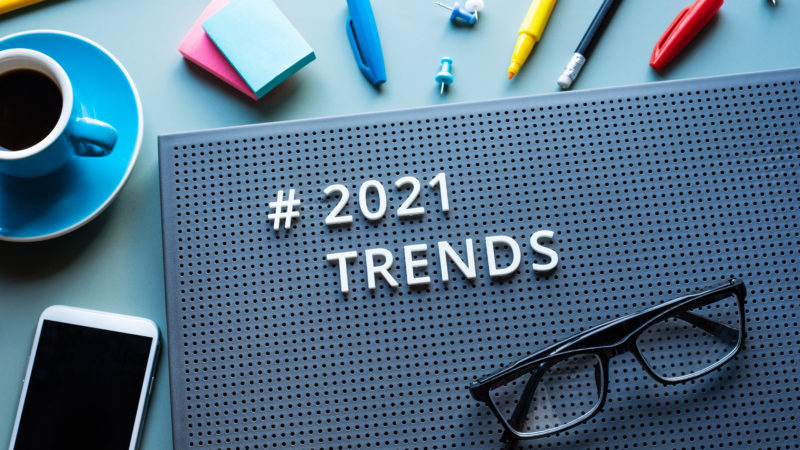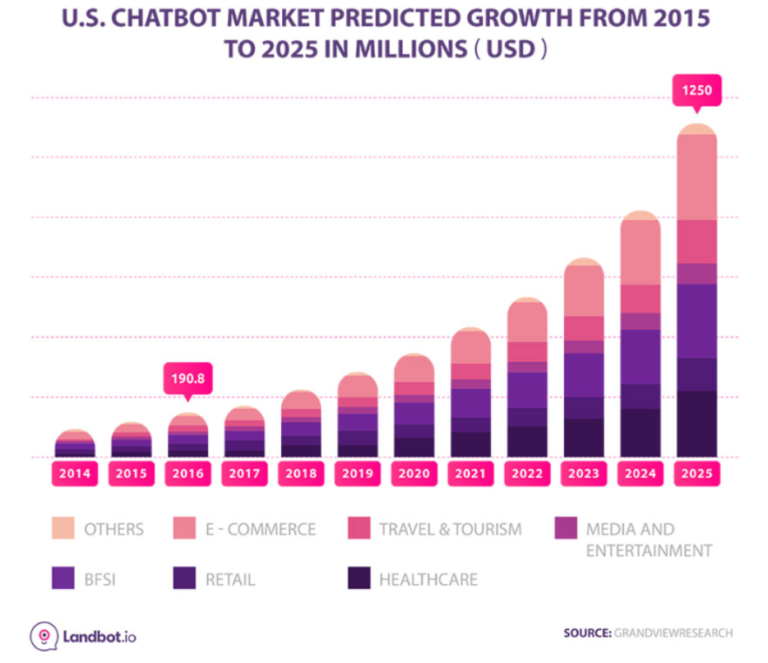7 Digital Marketing Trends for 2021

We still don’t know how the Covid-19 pandemic will evolve and what the year that has just begun will be like, but we can identify the trends that arose in 2020 and will continue to consolidate and be a part of the digital strategies of this new normal.
People and technology, physical and digital, human interactions and virtual assistance: let’s take a look at the 7 trends to keep an eye on for this new year just beginning.

From developing integrations to strategic support, from creating creative concepts to optimizing results.
1. A focus on people
According to Deloitte, one of the main trends of the new year will be the return to the importance of relationships and human experiences and the restoration of the value of the person and his or her needs.
When social distancing, new technologies, and digitization become the protagonists of everyday life as radically and quickly as they did in 2020, it’s not surprising that in response, the need to return to a vision of reality focused on people began to mature, as well as renewed importance in human and social relationships.
More than half of the 16,000 people interviewed by Deloitte asked for a more “human” experience from the social context we are experiencing.
In fact, although the new technologies are proving useful in various senses, they are also very clearly demonstrating that they cannot compensate for the human interactions that, never before as in 2020, have made us understand how important they are with their absence.
Bringing people back to the center of companies’ strategic choices will therefore not only be a trend but a mandatory action for those wanting to adapt to the new normal.
Brands can work in this direction in two ways:
- Rethinking values. Human experience is guided by values, and values determine the emotions we have and actions we take. 95% of our purchasing choices are based on unconscious needs, including above all our emotions. This is why companies must start rethinking the values and mission on which they are based and which they share with their audiences. This will increase the trust characterizing relationships between companies and users and forming the basis of the human experience:

- Redesigning infrastructure to respond to people’s real needs. Like any self-respecting crisis, this pandemic has triggered the need for change and innovation. Many brands have responded to the crisis and seized the opportunity to self-analyze and redesign internal processes and policies with the aim of getting closer to their audiences, analyzing and understanding their new needs to meet emerging demands and restore the importance of human relationships.
2. Conversational marketing and chatbots
Physical distancing and the absence of connections have brought out the need to find new forms of dialogue between companies and users and has made them aware of the importance of conversations as a form of connecting. Today more than ever, consumers are increasingly looking for a one-to-one relationship with companies which makes their customer experience even more meaningful and personalized, making them understand the fundamental role of conversational marketing.
Digitization and technological progress will again be confirmed as valid allies to enhance digital conversational marketing strategies in 2021: over the last year, the use of chatbots and new technologies such as Voice over Internet Protocols (VoIP) or call centers based on artificial intelligence have begun to change the way companies interact with consumers, making new forms of assistance and dialogue possible which are increasingly customizable and lack any limits on time and space.
This trend is destined to accompany us again this year: Gartner predicts that by 2030 one billion requests will be automatically collected by chatbots and it is estimated that the chatbot market will exceed one billion dollars by 2025 in the United States alone.

3. Phygital
The convergence between physical and digital will undoubtedly be another trend of 2021.
We are hearing about phygital more and more often; that is, the integration between traditional forms of retail and digital experience through a multi-channel approach.
Tools such as QR code readers for billboards or restaurant menus or Amazon Go, the supermarket launched by Amazon in 2018 without cash registers and cashiers, are some of the examples of the phygital approach seen thus far.
With phygital we will try to combine the best of the physical world (interactions with people and the physical contact with products/services) with the best of virtual reality (immediacy, greater choice, and speed) to create as complete and satisfying a customer experience as possible.
Physical and digital will therefore be increasingly interdependent and connected to make users increasingly free to choose where to experience each phase of their customer experience. To ensure this integration, the three key factors will be immediacy, immersion capacity, and interactions, as well as the adoption of a multi-channel digital strategy as a prerequisite.
4. Augmented reality
When it comes to the fusion of physical and digital dimensions, we cannot fail to mention augmented reality, another trend that we will see confirmed in 2021.
The AR market recorded a value of $10.7 billion in 2019 and is expected to reach $72.7 billion by 2024, with an annual growth of 46.6%.
Augmented reality, or AR, is intended as any digital output (images, text, 3D models) that is superimposed on the reality surrounding us. This mechanism can take place in different ways: through the screen of a smartphone, special viewers, or a pair of smart glasses.
This technology can be advantageous for many sectors ranging from healthcare to education, passing through gaming and travel.
From the point of view of retail and buying habits in this new year, augmented reality will be the tool that allows making the offline shopping experience even more practical and appreciable, rendering it even more similar to in-store shopping through try and buy experiences like that provided by Shopify for Magnolia. That’s not all: AR will be an excellent means for more easily combining physical experience and virtual dimension and optimizing the phygital phenomenon.
5. Voice search and voice technology
In recent years there has been a significant increase in the use of voice assistants such as Alexa, Google Assistant, and Siri and it is expected that more than 55% of consumers will have a smart speaker by 2022.
Users will be more and more accustomed to finding information on the web through voice search and companies will need to optimize their websites and content to accommodate the rise of this technology and ensure greater site traceability.
The influence of the voice technology trend is not limited merely to SEO and the ways in which consumers carry out their searches, but is also having an impact on their purchasing habits and behavior:
- 36% use voice assistants to request support from a brand
- 35% use them to buy products (this explains why, for example, Amazon is working on integrating Alexa with its online shopping service and with Amazon Fresh)
- 34% use smart speakers for food delivery. In fact, McDonald’s has acquired the voice technology startup Apprente to meet customer needs and optimize the ordering experience for McDrives and MacKiosks.
In 2021, companies will therefore have to start opening their doors to this new technology. Some brands have already moved in this direction: Honda has started partnerships with Amazon, Walmart, and Target to allow making purchases through voice technology directly from their cars and while driving, while in Italy Scavolini has created furniture with built-in Alexa assistance to allow the voice control of household appliances.
6. Mobile first
Another trend from the perspective of SEO and user browsing habits will be mobile-first indexing, and more generally, the importance of offering a customer experience optimized for mobile devices.
In fact, it is estimated that by 2025 at least 70% of users will browse exclusively via smartphone.
For this reason, Google will put more and more importance in the mobile version of websites and it will be essential not only to optimize browsing to adapt it to these devices, but to turn all marketing activities in this direction. Creating web pages and email campaigns with a mobile friendly or responsive design will now be an essential requirement to avoid being penalized by the search engine, and SMS Marketing activities should not be considered obsolete and outdated, as they will intercept an audience increasingly inclined to use mobile devices.
7. E-commerce… and more
Precisely because of the importance that mobile browsing will assume, a trend already mentioned in 2020 was the search for alternative solutions to e-commerce for online shopping, which are increasingly accessible via smartphone and even more immediate and convenient for users.
We will continue to witness the “e-commerce race” that Covid started last year. Indeed, thanks to the exponential growth of platforms such as Shopify, WooCommerce, and Prastashop, even those least prepared in the digital field have begun to take action and use these services to create their own e-commerce sites in a simple and, above all, economic way.
Shopify recorded 97% growth at the end of June 2020 compared to the same period the previous year.
The pandemic has made e-commerce not just a trend, but an urgency that companies have had to gradually accommodate and which will most likely remain even when the health emergency is a distant memory.
Nonetheless, we already saw some alternative solutions last year that suggest e-commerce will not be the only way forward in 2021. These solutions will be united by the attempt to make virtual shopping even more immediate and convenient, with the aim of creating purchasing touchpoints that intercept users during their daily leisure activities. We are therefore talking about solutions such as Facebook shops, with which consumers will be able to consult product lists directly on their favorite social networks and make purchases without landing on companies’ websites and e-commerce sites.
But the possibilities on social networks may not be limited to only this type of experience: it will be interesting to see if initiatives such as so-called streaming shops, which are already proving to be a significant business in China thanks to Alibaba’s live shows, will really take off in 2021.
Using the Live Shopping feature, it will be possible to tag products displayed during a live show to allow their immediate purchase. Tommy Hilfiger provided us with a first example of a western streaming shop: last May the followers of the brand’s Instagram channel were able to access, through Instagram stories, a live streaming show that aimed to give consumers a real-time shopping experience. A similar format was adopted in Italy by Chiara Ferragni for a product launch in partnership with Lancome: the influencer created a one-of-a-kind social event integrating the live shopping experience with a live show in which interactions with guests and the public captured interest and boosted purchases.
In summary
The importance of people and the physical dimension, but also the growth of new technologies and digitization: the trends of 2021 may seem contradictory, but in reality the trend of the new digital strategies will be precisely that of reconciling a dimension that was the only viable road in 2020 (the virtual one) to a dimension (the physical one) whose advantages have made us completely notice their absence, to create an all-encompassing experience that satisfies today’s new needs.